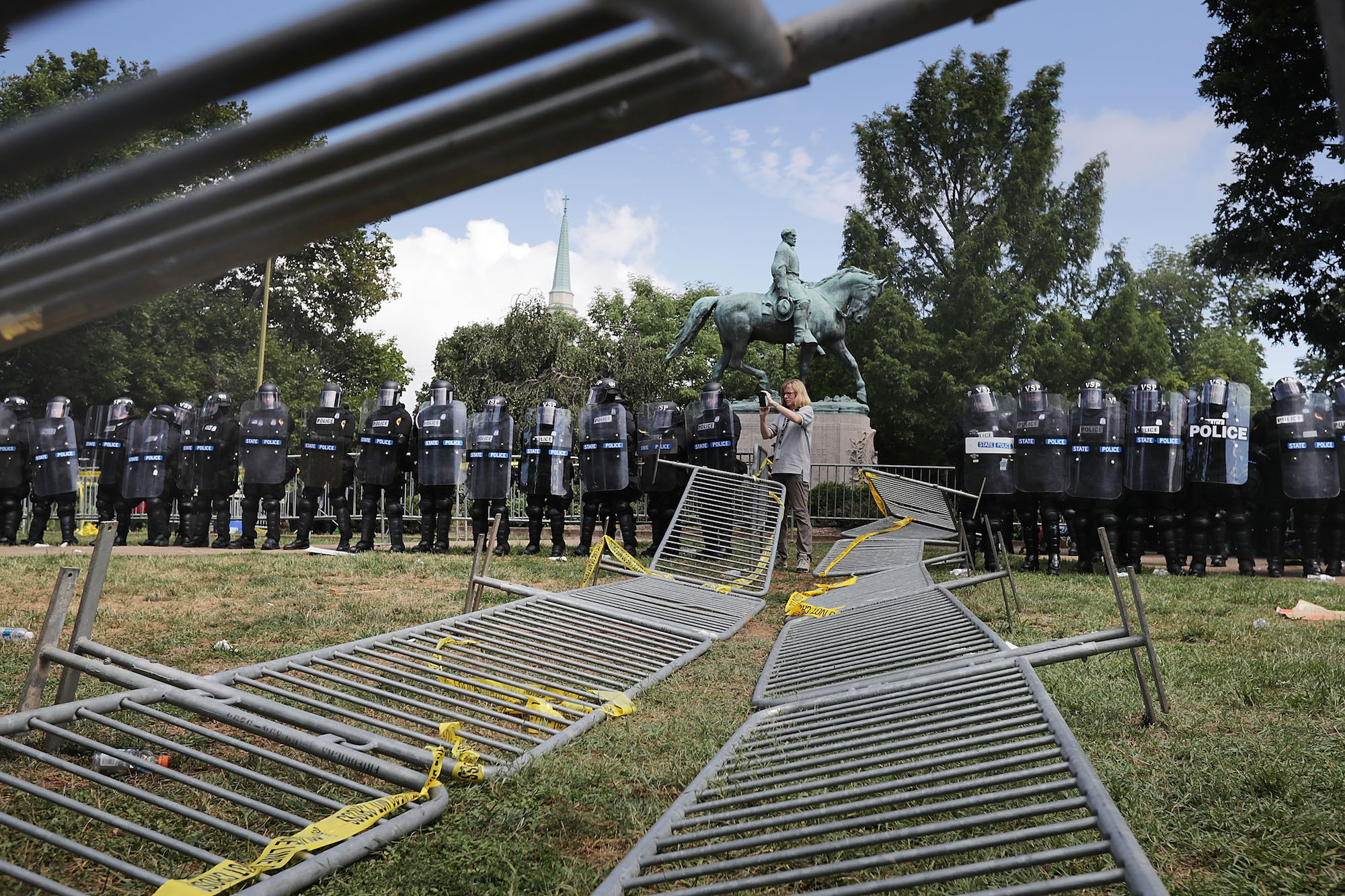City and state officials across the US are stepping up their efforts to remove Confederate monuments in the wake of the violence and chaos that gripped Charlottesville, Virginia, last weekend during a white nationalist rally.
In an overnight operation on Wednesday, four Confederate monuments were removed from Baltimore, Maryland, following an order by Mayor Catherine Pugh and a vote by city council just days earlier.
Officials in Lexington, Kentucky; Jacksonville, Florida; and Memphis, Tennessee, have also said in recent days said they will either move forward with plans to remove statues, or make arrangements to do so. Meanwhile, in Durham, North Carolina, protesters toppled a statue of a Confederate soldier on Monday.
The trend of removing prominent Confederate symbols has picked up steam since 2015, following the mass shooting by a white supremacist at a historic black church in Charleston, South Carolina, but the symbols remain commonplace in many states.
According to data from the Southern Poverty Law Center, hundreds of public Confederacy symbols are scattered across states throughout the country – not only in the former Confederate states, but also in Union states, border states, and states that didn’t yet exist during the Civil War.
The symbols include statues, monuments, schools, parks, streets, and highways named after Confederate generals; districts that celebrate Confederate-related holidays; public buildings that feature Confederate flags; and even cities that issue commemorative license plates.
It's not an exhaustive list, but the SPLC used data from a mixture of public and private databases to determine that 1,503 confederate symbols existed throughout the country as of April, 2016. A Business Insider analysis found that at least 11 Confederacy symbols the SPLC originally listed have since been removed.
Here's an updated map that shows roughly how many symbols still exist in each state:

